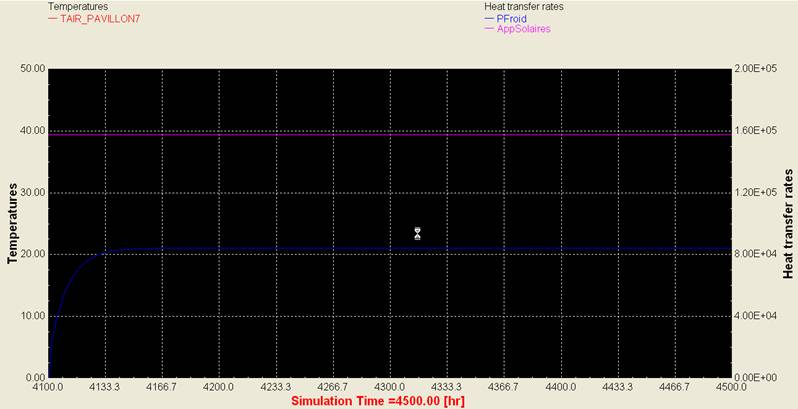Dear TRNSYS users,
I post again this message, hoping that someone can give a quick look to our sample project and give us some ideas on the reasons we don’t have the results we expected :
We have a little problem with type 56. I send you enclosed a sample project illustrating our problem.
In type 56, we have one zone with 4 external glazed surfaces, with 4 orientations (namely ENE, 124 m2, SSE, 48m2, OSO, 124 m2 and Horizontal, 198 m2), and a boundary surface, with identical temperature.
There are no internal loads. External radiation is fixed to 1000 kJ/hm2 on ENE, 2000 kJ/hm2 on SSE, 600 kJ/hm2 on OSO and 800 kJ/hm2 on horizontal, and assumed totally direct (ITotal = IBeam), with a zero incident angle for each orientation (this is no realistic, but we wanted to avoid problems with angle-dependant transmission coefficient).
A cooling type is added to the building, in order to maintain ambient temperature to 26°C.
All the windows have a SHGC of 0.387, for 0° incident radiation, calculated by LBNL Window, and a ratio of frame of 10 %.
We expected cooling load, for static conditions, to be in the order of the result of following equation :
( IT_ENE*124 + IT_SSE*48 + IT_OSO*124 + RadTotHor*198 )* 0.387 * 0.9
! 124 = WinSurf ENE, 48 = WinSurf SSE, 124 = WinSurf OSO, 198 = WinSurf Hor
! 0.387 = Win SHGC
! 0.9 = 1-ratioFrame
(TotalRad equation)
However, TRNSYS give us almost half of this load (P froid in this picture, VS AppSolaires calculated by TotalRad equation).

Do you have any idea of the reason our hand calculation is so far from TRNSYS calculation?
Thank you for your help !
Best regards,
Marcello Caciolo
Responsable Outils et Méthodes d'Analyse Energétique

Cellule Efficacité Energétique et Environnementale - Pôle Projets et Réalisations
46 Boulevard de la Prairie au Duc
BP 40119 - 44201 Nantes Cedex 02
Tél.: +33 02 40 41 06 57
marcello.caciolo@cofelyaxima-gdfsuez.com
P Pensez à l'environnement avant d'imprimer ce message